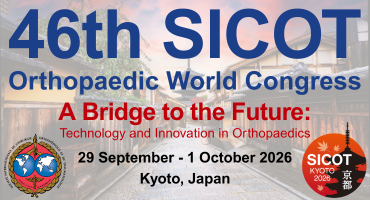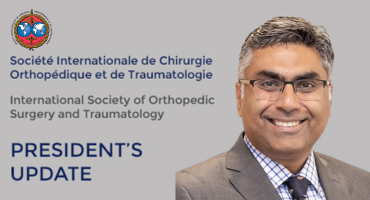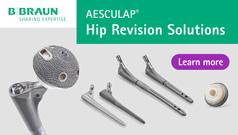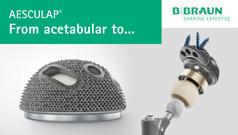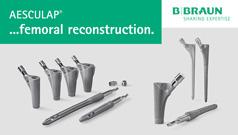Update in Orthopaedics
Lower reoperation rate for cemented femoral stem than for uncemented femoral stem in primary total hip arthroplasty following a displaced femoral neck fracture
Andersen MF, Jakobsen T, Bensen AS & Krarup N (2015) Lower reoperation rate for cemented femoral stem than for uncemented femoral stem in primary total hip arthroplasty following a displaced femoral neck fracture. SICOT-J, 1, 26
Abstract – Introduction: Acute displaced femoral neck fractures are often treated with cemented hemiarthroplasty (HA). There is increasing evidence that total hip arthroplasty (THA) may be a better alternative, but the degree to which the fixation of the femoral stem used affects the outcome is not fully known. The aim of this study is to compare rates of operative complications and implant survival following THA treatment of displaced femoral neck fractures with either a cemented or an uncemented femoral stem. Methods: The study consists of two groups of patients (N = 334), who were treated for a displaced femoral neck fracture with THA at the Regional Hospital of Viborg during 2007–2012. The first group (50.9%) had uncemented (Corail) stem while the second group (49.1%) had cemented (Exeter) stem implanted. Nearly all patients had uncemented dual mobility cup (Saturne) as acetabular component and were followed up to three months postoperatively. Data regarding rates of implant survival and operative complications were obtained by retrospective review of medical records. Results: We found a statistically significant difference regarding rates of postoperative reoperation with 1.2% (95% CI 0.005–0.03) for cemented and 5.9% (95% CI 0.02–0.09) for uncemented stem (p = 0.02). The main causes for reoperation were peri-prosthetic fractures and deep infections. There was no difference regarding dislocation or peroperative complications. Rates of dislocation were 4.3% (95% CI 0.012–0.07) for cemented and 3.5% (95% CI 0.008–0.06) for uncemented stem (p = 0.72). Rates of peroperative complications were 6.1% (95% CI 0.024–0.1) for cemented and 8.2% (95% CI 0.04–0.12) for uncemented stem (p = 0.1). Discussion: Our results indicate that cemented femoral stem is superior to cementless when rates of reoperation are compared.
Key words: Displaced femoral neck fracture, Total hip arthroplasty, Cemented, Uncemented, Reoperation
Comment by Ahmed H. Abdelazeem - Cairo, Egypt
Using cemented or cementless stem is a debatable issue. The pros and the cons of each make the choice difficult. In this study from Denmark, Andersen and his colleagues discussed their expertise in exploring both types by using single type cementless and uncemented stems when doing THR with dual mobility cups.
They defined their primary outcome measures very clearly. They compared their results during the early first three months postoperatively regarding the perioperative complications, dislocation and reoperation. Concerning the patients' demographics, the two groups were comparable to each other except for the age (p < 0.00), where the patients treated with a cemented THA tended to be older. All other factors were optimised; single hospital, level of surgeons experience, single approach and same intra and perioperative protocols.
The results were comparable with other papers in literature and supporting the use of cemented stems as they found a statistically significant rate of reoperation in favour of cemented stems. The reasons for reoperation were peri-prosthetic fractures and deep infections. They related this to the gentler reaming and use of antibiotics with the bone cement.
I found that this paper is a good addition to the literature reports that cemented stems work better after acute fracture of neck of femur with much lower complications rate.







